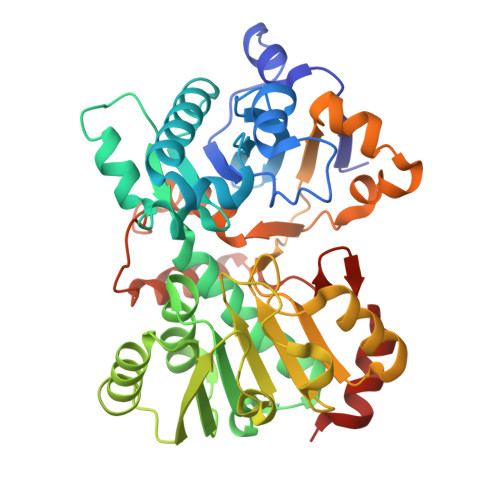Designing small molecules targeting a cryptic RNA binding site through base displacement.
Olenginski, L.T., Wierzba, A.J., Laursen, S.P., Batey, R.T.(2025) Nat Chem Biol
- PubMed: 40883492
- DOI: https://doi.org/10.1038/s41589-025-02018-8
- Primary Citation of Related Structures:
9E50, 9E5H, 9E5I, 9E5J, 9E5K, 9E5L, 9E5M, 9E5O, 9E5P, 9E5Q, 9E5R, 9E5S, 9E5T, 9ELR, 9MFH - PubMed Abstract:
Most RNA-binding small molecules have limited solubility, weak affinity and/or lack of specificity, restricting the medicinal chemistry often required for lead compound discovery. We reasoned that conjugation of these unfavorable ligands to a suitable 'host' molecule can solubilize the 'guest' and deliver it site-specifically to an RNA of interest to resolve these issues. Using this framework, we designed a small-molecule library that was hosted by cobalamin (Cbl) to interact with the Cbl riboswitch through a common base displacement mechanism. Combining in vitro binding, cell-based assays, chemoinformatic modeling and structure-based design, we unmasked a cryptic binding site within the riboswitch that was exploited to discover compounds that have affinity exceeding the native ligand, antagonize riboswitch function or bear no resemblance to Cbl. These data demonstrate how a privileged biphenyl-like scaffold effectively targets RNA by optimizing π-stacking interactions within the binding pocket.
- Department of Biochemistry, University of Colorado Boulder, Boulder, CO, USA.
Organizational Affiliation:


















